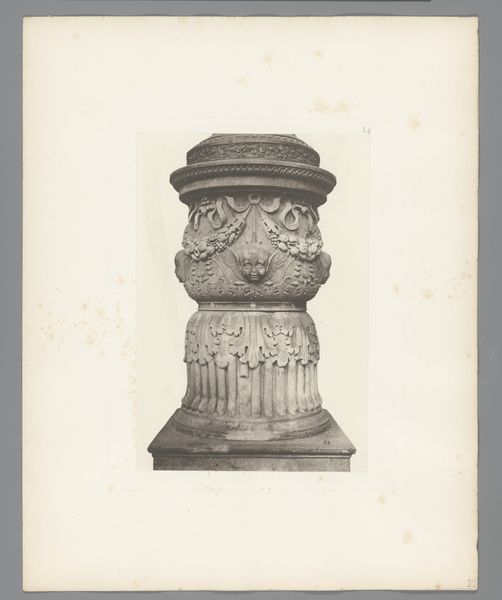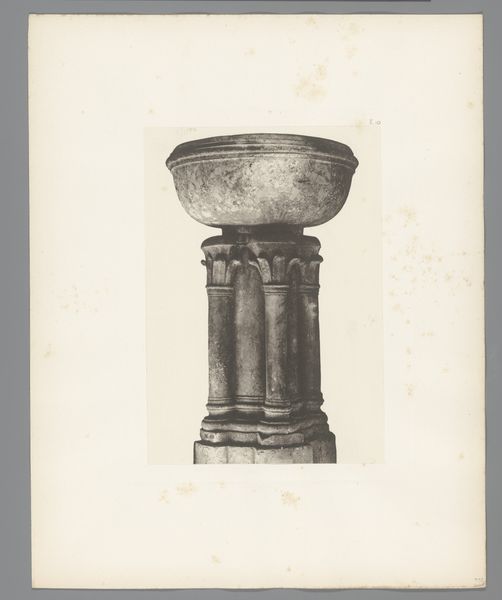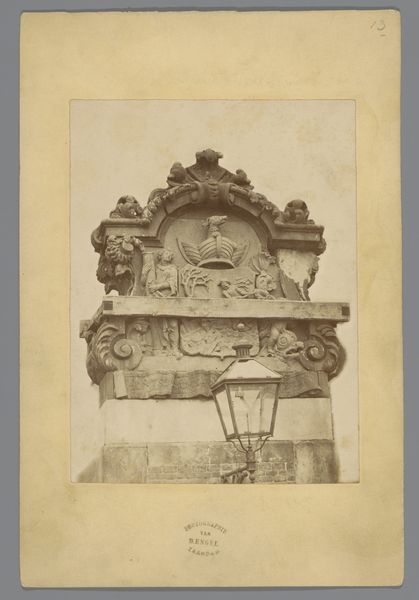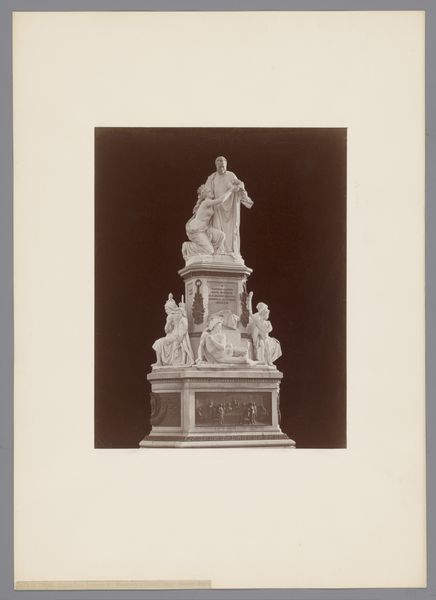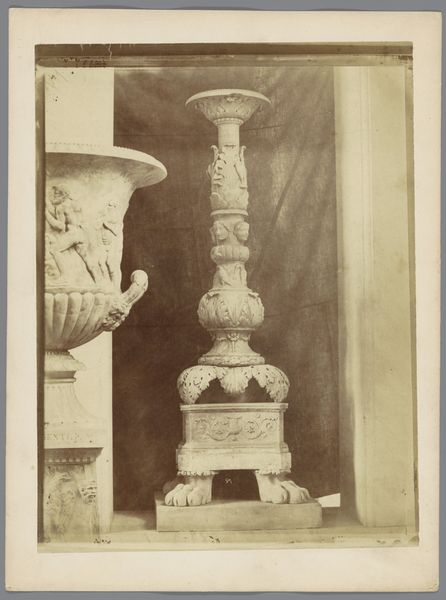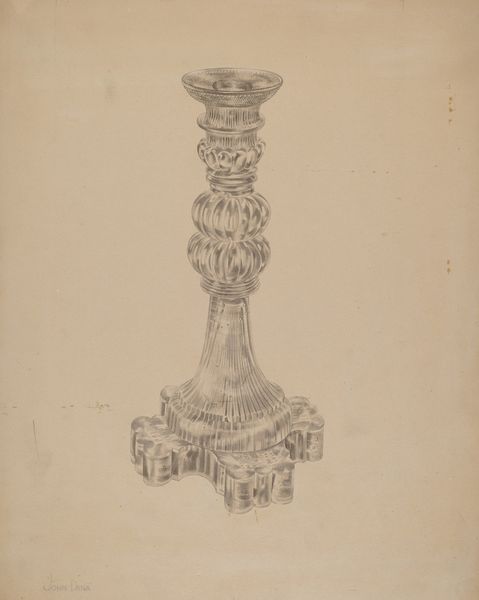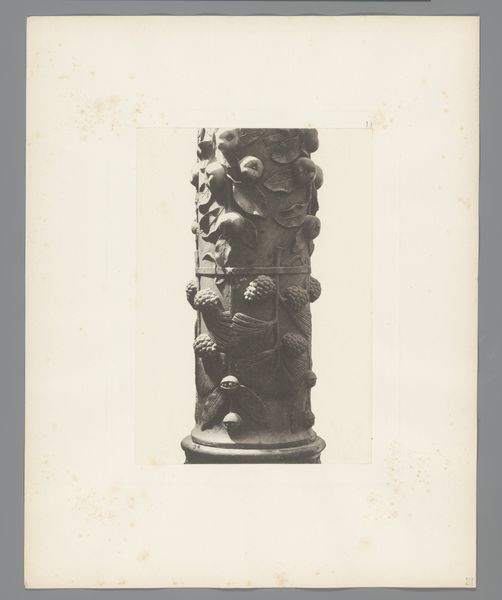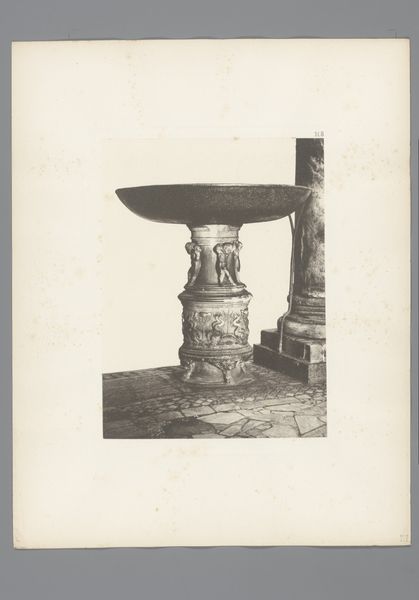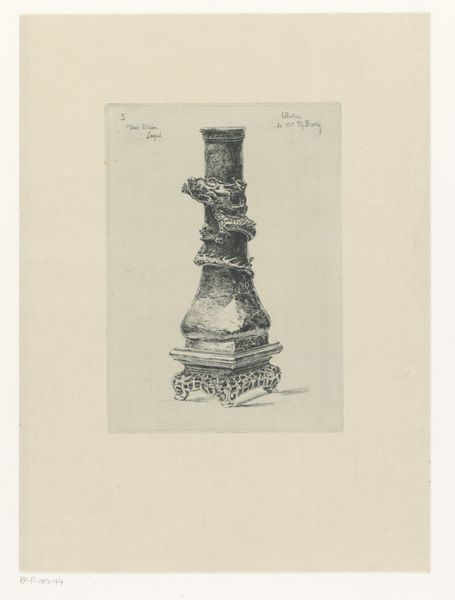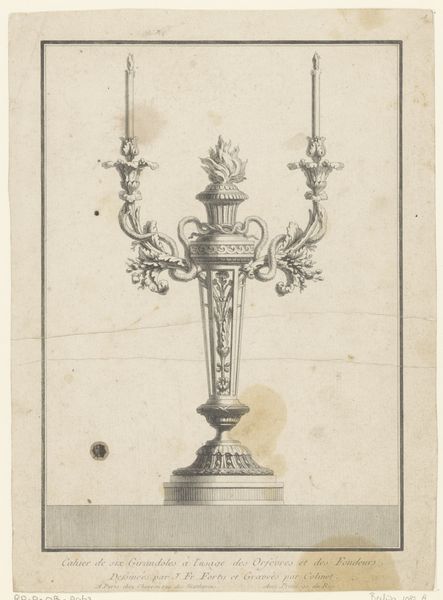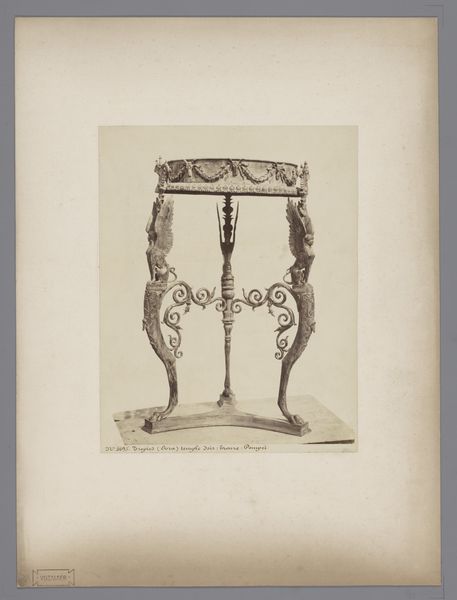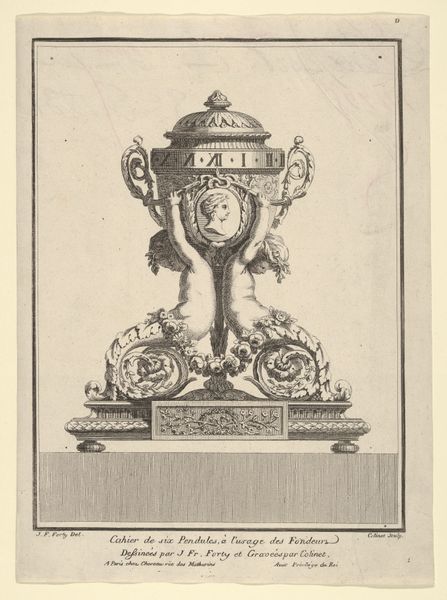
photography, sculpture
portrait
photography
sculpture
realism
statue
Dimensions: height 358 mm, width 272 mm, height 650 mm, width 500 mm
Copyright: Rijks Museum: Open Domain
Editor: We are looking at a photograph, “Met reliëf gedecoreerde zuil,” or “Column decorated with relief”, circa 1880-1900, by Carlo Naya. It is a beautiful detailed rendering of a sculpture. I am curious what the role of a sculpture like this may have played in the late 19th century. What is your take on it? Curator: This photograph highlights a specific type of 19th-century sculptural reproduction. Its availability as a photograph democratized access, moving artwork beyond elite circles. Consider the context: photography's rapid growth allowed people to engage with art and artifacts, real or imagined, far removed from their daily lives, influencing personal taste and cultural identity on a broad scale. Editor: That’s interesting. Did the subjects typically reflect values that were in keeping with the broader culture? Curator: Absolutely. Columns, often embellished with historical or allegorical narratives, embodied ideas of power and progress. Its sculptural elements— the lions and cherubic faces, the ornate clock —are these markers of specific political messages or cultural values of the time. Were the photographic reproductions, like this one, more about accessibility or about furthering an agenda? Editor: Both, maybe? It provided an immediate experience, but the reproduction itself still came with its own intentions and socio-cultural background, which now I realize must have had an effect on shaping popular taste. Thanks, that clarifies it a lot. Curator: It has been a pleasure! Looking closely at the public role of art is essential.
Comments
No comments
Be the first to comment and join the conversation on the ultimate creative platform.
